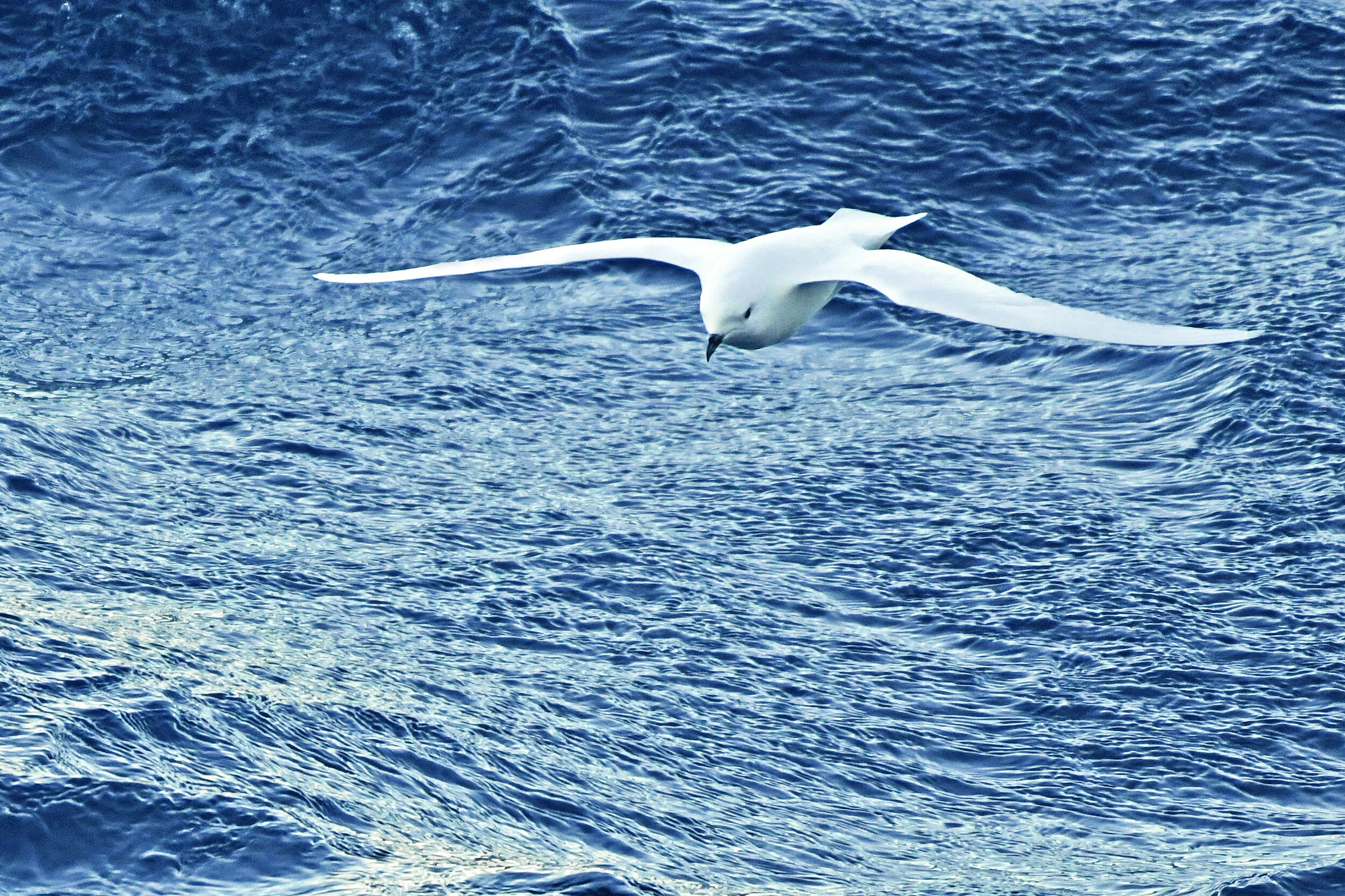
Antarctic Peninsula

Early morning dawn (3:30 am in early February) over the snow-covered mountains of "Graham Land" on the Antarctic Peninsula.

Antarctic Peninsula

A tabular iceberg in the glow of the evening sun. Tabular icebergs can be 100 m (330 ft) tall. They have separated from giant Antarctic ice sheets as a result of a warming southern ocean.

Breaching humpback whale (Megaptera novaeangliae). Whales breach to communicate with other whales that are a further distance away and can’t be reached by conventional sonar. It takes an enormous amount of energy for a whale to put on such an above-water display.

Antarctic Peninsula

A leopard seal (Hydrurga leptonyx) resting on an iceberg. Leopard seals can weigh as much as 350 kg (770 lbs). Leopard seals are known to shoot out of the water and attack seals and even humans that are too close to the waters edge. They are ferocious predators.

The Chilean scientific research base in "Paradise Harbour". Note the penguins strolling all around the station.

A chinstrap penguin (Pygoscelis antarcticus). Chinstrap penguins can live as long as 20 years.

Antarctic Peninsula

Killer whale (Orcinus orca) at maximum speed. As a penguin, you don't want to see this coming towards you. Killer whales hunt in pods. They are known to bump ice flows from below to dislodge their prey (seals, penguins).

The mood changes quickly in this lonely, frozen landscape.

Paradise Harbour, Antarctic Peninsula

“Lemaire Channel” passage blocked by an iceberg. As with all icebergs, only 10% of the ice is visible above the water surface, the other 90% is submersed.

“Copper Mountain” in “Neumeyer Channel”, Anvers Island.

Antarctic Peninsula

Humpback whales (Megaptera novaeangliae)

The mood changes quickly in this lonely, frozen landscape.

The wreck of the burnt-out Norwegian factory whaling ship “Governoren” rests in “Foyn Harbour”. After a successful whaling expedition in 1915, the crew of 85 sailors celebrated their upcoming trip home on the lower decks - then, someone knocked an oil lamp off the table. The ship quickly caught fire and was totally destroyed. The ship’s holds were filled with whale oil which fueled the fire. All 85 crew were rescued by a nearby whaling ship.

Killer whale (Orcinus orca) with calf.

Humpback whales (Megaptera novaeangliae)

The mystery of icebergs in the Antarctic is enhanced by the fact that their beauty is created in total isolation. The elements are the artisans here. Crafted away from the eyes of the world, the icebergs’ existence goes mostly unnoticed, their beauty wasted on the eyes of penguins and whales.
These icebergs have flipped as melting shifted their weight.

The Argentinian scientific research base “Esperanza” at the most northern tip of the Antarctic Peninsula. This is where, in 1977, the first human baby was born on the Antarctic continent. By now (2020), 10 people can claim to have been born in Antarctica - this is less than the number of people who have walked on the moon.

The Greenpeace ship “Arctic Sunrise” on its way to “Esperanza”.

Another iceberg in the evening light.

Snow petrels (Pagodroma nivea) are not only rare, they are also difficult to photograph. The birds love to do acrobatics in the displaced air of the ship and dive with enormous speed.
“The snow petrel is the only member of the genus Pagodroma. It is one of only three birds that breed exclusively in Antarctica, and has been seen at the Geographic South Pole. It and the south polar skua have the most southerly breeding distribution of any bird.” Wikipedia

A tabular iceberg in the evening light.

Iceberg lit up by the evening sun near Anvers Island, Antarctic Peninsula

A large chinstrap penguin (Pygoscelis antarcticus) colony at the entrance to the caldera of “Deception Island”, South Shetland Islands, Antarctica. The island is an active volcano. The red colour is oxidized iron from the latest eruption (1969) while the green colour shows the presence of lichen.

Porpoising gentoo penguins (Pygoscelis papua) can reach speeds of up to 50 km/h (30 mi/h).

When penguins head into the water to feed, there is strength in numbers. Leopard seals and killer whales can attack at any time.

Navigating a ship through floating icebergs is a challenge at the best of times. This is especially true in wind speeds of 75 knots (140 km/h or 87 mi/h). This is the very northern tip of the Antarctic Peninsula where winds are funneled and dangerous.

A humpback whale (Megaptera novaeangliae) at full speed.

The “Ocean Tramp” is an expedition sailboat cruising the Antarctic Peninsula. The vessel has room for 8 passengers and 3 crew.

Gentoo penguins (Pygoscelis papua) on an ice flow in the Gerlache Strait, Antarctic Peninsula.

The mood changes quickly in this lonely, frozen landscape.

Tabular icebergs can be 100 m (330 ft) tall. They have separated from giant Antarctic ice sheets as a result of a warming southern ocean.

Waves are lapping at the base of a giant tabular iceberg. These iceberg can float in the world’s oceans for years until all of the ice is melted.

A chinstrap penguin (Pygoscelis antarcticus) colony on “Deception Island”.

Deception Island near the Antarctic Peninsula houses the largest chinstrap penguin (Pygoscelis antarcticus) colony on the continent.

A female killer whale (Orcinus orca) and her baby. The discoloration of the white spots is caused by diotoms (photosynthesizing algae) growing on the whales’ skin. It is believed that killer whales migrant north to the tropics in order to re-new their skin in warmer waters.

The southern giant petrel (Macronectes giganteus) is sometimes referred to as the vulture of the southern oceans. They feed off dead seals and the carcasses of birds and whales. This bird can reach an age of 26 years.









































